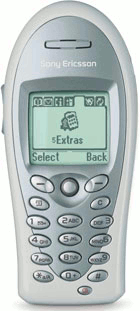GHOST SMS (text) testing
After rolling off the CDPD WAP WML testing, I was assigned to test GSM hosted SMS teleservices for a GAIT phone. A decision had been made in the industry to sunset TDMA in favor of GSM and CDMA for 3G cellular communications.
TDMA carriers were free to choose their migration path and most embraced GSM. During the transition period, TDMA and GSM networks would exist together and new phones were required to be capable or roaming between the technologies as seamlessly as practical.

Ericsson T-62u GAIT cellphone with AMPS, IS-136 TDMA, GSM, GPRS, Java and a WAP browser, a 2.5G cellular phone.
The basic concept behind GHOST was that when on a GSM network, the phone would use GSM code for SMS. When on a TDMA network, the phone would encapsulate and transport a TDMA SMS message in the R-DATA to the TDMA side of the phone which then sent it over the air interface. In the reverse process, an SMS coming in on TDMA would be encapsulated in an R-DATA and sent to the GSM side of the phone.
The SMS brains and muscle were in the GSM side of the phone. Testing the GSM side was easy, anyone camping on a GSM network could send and receive SMS over voice.
For SMS over GPRS, we didn't have it on our MSC downstairs but I could write those scripts in the lab. In the worst case, field engineers could travel to another location where SMS over GPRS was available. That really wasn't necessary as I could write the SMS over GPRS scripts in the lab.
On the TDMA side, everything had to be done in the lab. TDMA networks had not deployed GHOST and the MSC in our building didn't have the upgrades, nor would any be available until late in the project.
The cost was also on the order of $60,000 for the MSC upgrades. I was asked about this and replied not to worry because I could handle everything in the lab. So, with that, the downstairs MSC was not upgraded and I had the project riding on my shoulders as no one else in the company had the means of testing GHOST on TDMA.
The requirements for GHOST were fairly straightforward, the user should not be able to tell from the display which technology they are on and it should work within a technology but not across techologies meaning, when on a TDMA network, the phone should send and receive SMS messages out the TDMA side of the phone. Likewise for GSM. GHOST on AMPS was not supported.
I went through all the protocol scenarios for GHOST; both short and long messages. By the time testing had finished, I believe there were 200 fully automatic scripts. Problems were mostly in the phones user interface and SMS handler.
Zero Defect Release
When this product went to field, no defects were reported by back by the customer.




